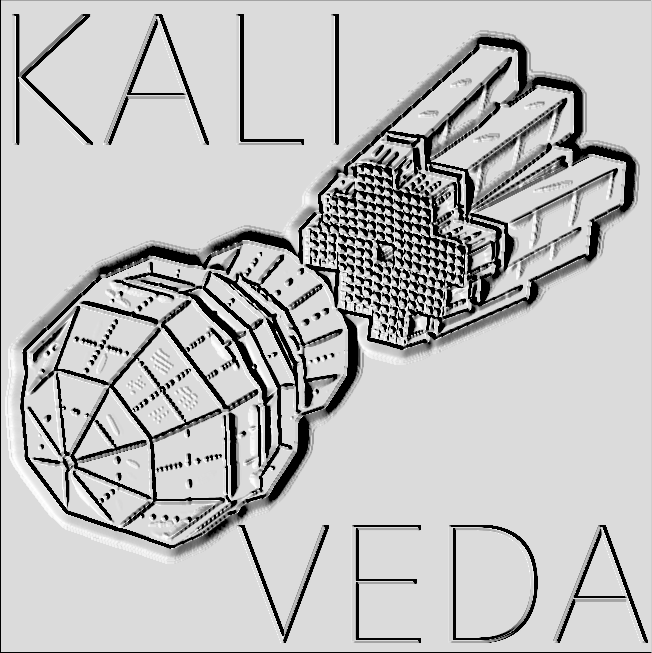4 #include "KVGeoNavigator.h"
5 #include "KVTemplateEvent.h"
6 #include "KV3DGeoTrack.h"
7 #include "KVNucleusEvent.h"
10 #include "KVGeoStrucElement.h"
38 if (fStrucNameFmt.HasParameter(
type)) {
68 GetNameCorrespondance(
name.Data(), tmp);
125 if (itbit ==
"det") {
137 else if (itbit ==
"struc") {
142 if (el->
IsType(struc_typ))
break;
192 : fGeometry(
g), fCurrentStructures(
"KVGeoStrucElement", 50), fDetStrucNameCorrespList(nullptr),
193 fDetectorPaths(
kTRUE)
314 Warning(
"SetNameCorrespondanceList",
"File %s not found", listfile);
464 multilayer = segmented =
kFALSE;
477 detector_volume = mother_vol;
497 detector_volume = mother_vol;
504 return detector_volume;
730 while (!path.
End()) {
744 TString nums = struc_name(last_ + 1, struc_name.
Length() - last_ - 1);
888 else gtrack->
Draw(
"ogl");
891 else gtrack->
Draw(
"same");
Option_t Option_t TPoint TPoint const char GetTextMagnitude GetFillStyle GetLineColor GetLineWidth GetMarkerStyle GetTextAlign GetTextColor GetTextSize void char Point_t Rectangle_t WindowAttributes_t Float_t Float_t g
Option_t Option_t TPoint TPoint const char GetTextMagnitude GetFillStyle GetLineColor GetLineWidth GetMarkerStyle GetTextAlign GetTextColor GetTextSize void char Point_t Rectangle_t WindowAttributes_t Float_t Float_t Float_t Int_t Int_t UInt_t UInt_t Rectangle_t Int_t Int_t Window_t TString Int_t GCValues_t GetPrimarySelectionOwner GetDisplay GetScreen GetColormap GetNativeEvent const char const char dpyName wid window const char font_name cursor keysym reg const char only_if_exist regb h Point_t winding char text const char depth char const char Int_t count const char ColorStruct_t color const char Pixmap_t Pixmap_t PictureAttributes_t attr const char char ret_data h unsigned char height h Atom_t Int_t ULong_t ULong_t unsigned char prop_list Atom_t Atom_t Atom_t Time_t type
char * Form(const char *fmt,...)
Class for iterating over nuclei in events accessed through base pointer/reference.
Visualise particle trajectories through array geometry.
void Draw(Option_t *option="") override
Override Draw to add a TPolyMarker3D at the end of the track.
virtual const Char_t * GetType() const
virtual Bool_t IsType(const Char_t *typ) const
virtual void SetNumber(UInt_t num)
static Bool_t SearchKVFile(const Char_t *name, TString &fullpath, const Char_t *kvsubdir="")
void Warning(const char *method, const char *msgfmt,...) const override
Abstract base class container for multi-particle events.
Base class for propagation of particles through array geometry.
virtual void AddPointToCurrentTrack(Double_t, Double_t, Double_t)
void FormatStructureName(const Char_t *type, Int_t number, KVString &name)
Bool_t IsTracking() const
TGeoHMatrix fCurrentMatrix
current global transformation matrix
void PropagateEvent(KVEvent *, TVector3 *TheOrigin=0)
const TGeoHMatrix * GetCurrentMatrix() const
Returns pointer to internal copy of current global transformation matrix.
TClonesArray fCurrentStructures
list of current structures deduced from path
TString fCurrentPath
current full path to physical node
void FormatDetectorName(const Char_t *basename, KVString &name)
TGeoNode * fCurrentDetectorNode
node for current detector
void ExtractDetectorNameFromPath(KVString &)
KVUniqueNameList fDetectorPaths
correspondance between physical node and detector objects
TGeoNode * GetCurrentNode() const
TGeoNode * fMotherNode
mother node of current node
void SetTracking(Bool_t on=kTRUE)
KVGeoNavigator(TGeoManager *)
Constructor. Call with pointer to geometry.
KVNameValueList fStrucNameFmt
list of user-defined formats for structure names
void SetNameCorrespondanceList(const Char_t *)
TVector3 fExitPoint
position of particle on exiting volume
TEnv * fDetStrucNameCorrespList
list(s) of correspondance for renaming structures/detectors
void SetStopPropagation(Bool_t stop=kTRUE)
virtual void PropagateParticle(KVNucleus *, TVector3 *TheOrigin=0)
TGeoVolume * GetCurrentDetectorNameAndVolume(KVString &, Bool_t &, Bool_t &segmented)
TGeoNode * GetCurrentDetectorNode() const
virtual void ParticleEntersNewVolume(KVNucleus *)
TString GetCurrentPath() const
TGeoVolume * GetCurrentVolume() const
Bool_t GetNameCorrespondance(const Char_t *, TString &)
Double_t fStepSize
distance to travel in volume
TGeoManager * fGeometry
geometry to navigate
Bool_t StopPropagation() const
TGeoNode * fCurrentNode
current node
virtual ~KVGeoNavigator()
Destructor.
TVector3 fEntryPoint
position of particle on entering volume
KVString fDetNameFmt
user-defined format for detector names
Int_t fCurStrucNumber
number of current parent structures
void ResetTrackID(Int_t id=0)
TGeoVolume * fCurrentVolume
current volume
void SetStructureNameFormat(const Char_t *type, const Char_t *fmt)
void DrawTracks(KVNumberList *=nullptr)
Base class describing elements of array geometry.
void SetValue(const Char_t *name, value_type value)
Description of properties and kinematics of atomic nuclei.
Int_t GetZ() const
Return the number of proton / atomic number.
Strings used to represent a set of ranges of values.
Bool_t Contains(Int_t val) const
returns kTRUE if the value 'val' is contained in the ranges defined by the number list
TVector3 GetMomentum() const
KVNameValueList * GetParameters() const
void SetOwner(Bool_t enable=kTRUE) override
Extension of ROOT TString class which allows backwards compatibility with ROOT v3....
void Begin(TString delim) const
KVString Next(Bool_t strip_whitespace=kFALSE) const
void Clear(Option_t *option="") override
void Delete(Option_t *option="") override
TObject * ConstructedAt(Int_t idx)
virtual const char * GetValue(const char *name, const char *dflt) const
virtual Int_t ReadFile(const char *fname, EEnvLevel level)
TGeoNode * GetMother(Int_t up=1) const
TObjArray * GetListOfTracks() const
TGeoNode * GetCurrentNode() const
void SetCurrentDirection(Double_t *dir)
TGeoNode * FindNextBoundaryAndStep(Double_t stepmax=TGeoShape::Big(), Bool_t compsafe=kFALSE)
void SetCurrentPoint(Double_t *point)
TGeoNode * FindNode(Bool_t safe_start=kTRUE)
const Double_t * GetCurrentPoint() const
TGeoHMatrix * GetCurrentMatrix() const
const char * GetPath() const
TGeoVolume * GetCurrentVolume() const
TGeoVolume * GetMotherVolume() const
const char * GetName() const override
virtual void SetNameTitle(const char *name, const char *title)
void AbstractMethod(const char *method) const
virtual TObject * Clone(const char *newname="") const
const char * Data() const
Ssiz_t Last(char c) const
Bool_t BeginsWith(const char *s, ECaseCompare cmp=kExact) const
TString & Remove(EStripType s, char c)
Bool_t Contains(const char *pat, ECaseCompare cmp=kExact) const
Ssiz_t Index(const char *pat, Ssiz_t i=0, ECaseCompare cmp=kExact) const
void SetXYZ(Double_t x, Double_t y, Double_t z)
const char * GetName() const override

